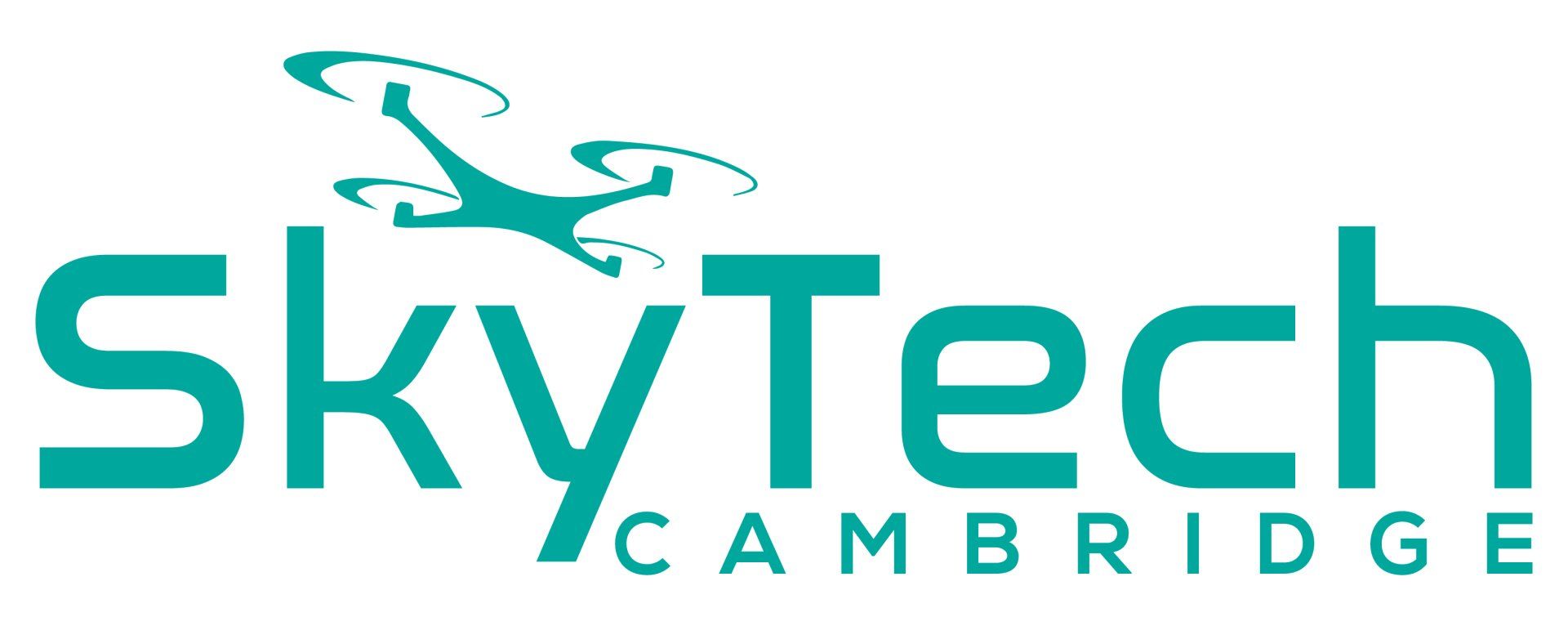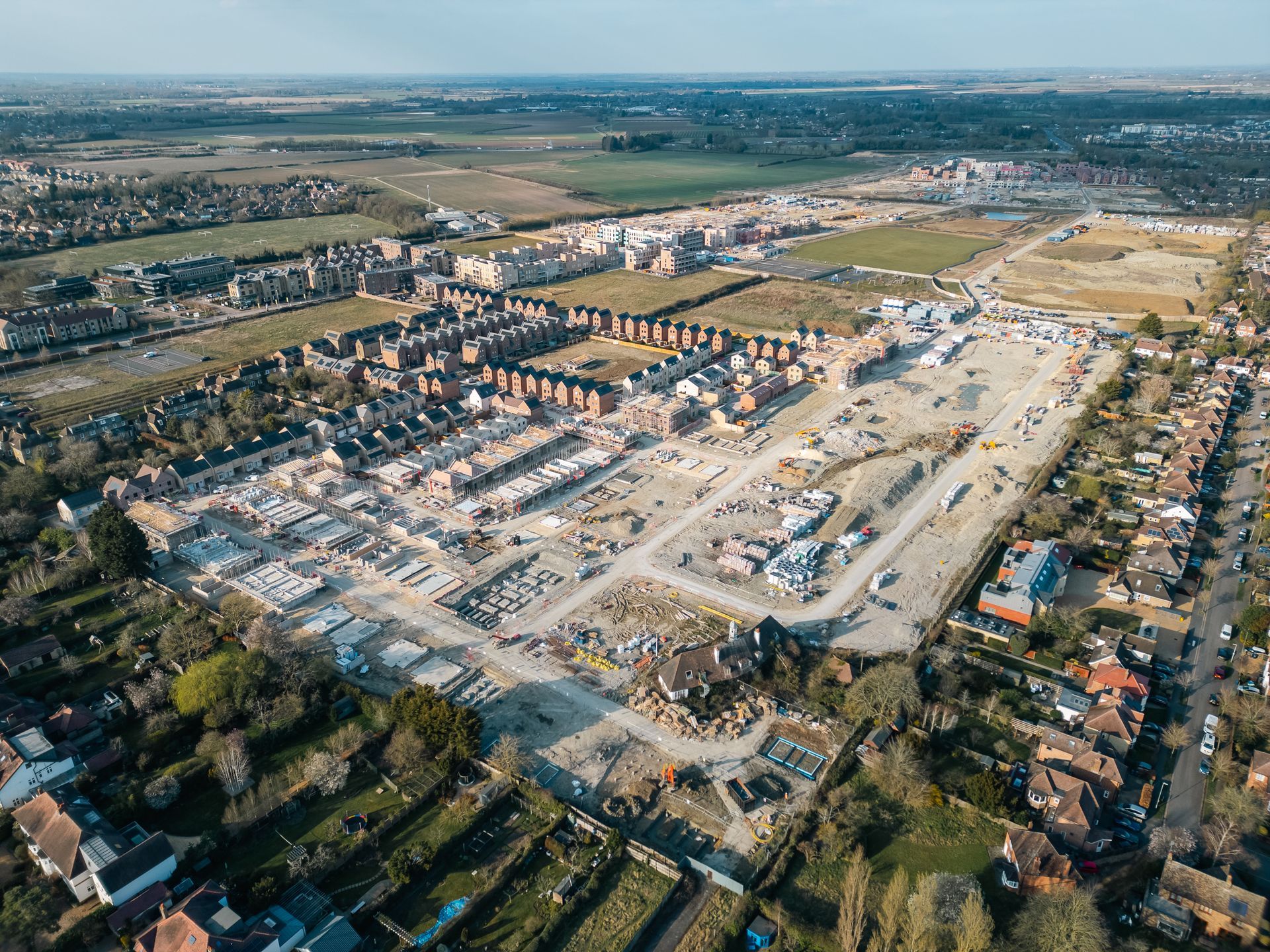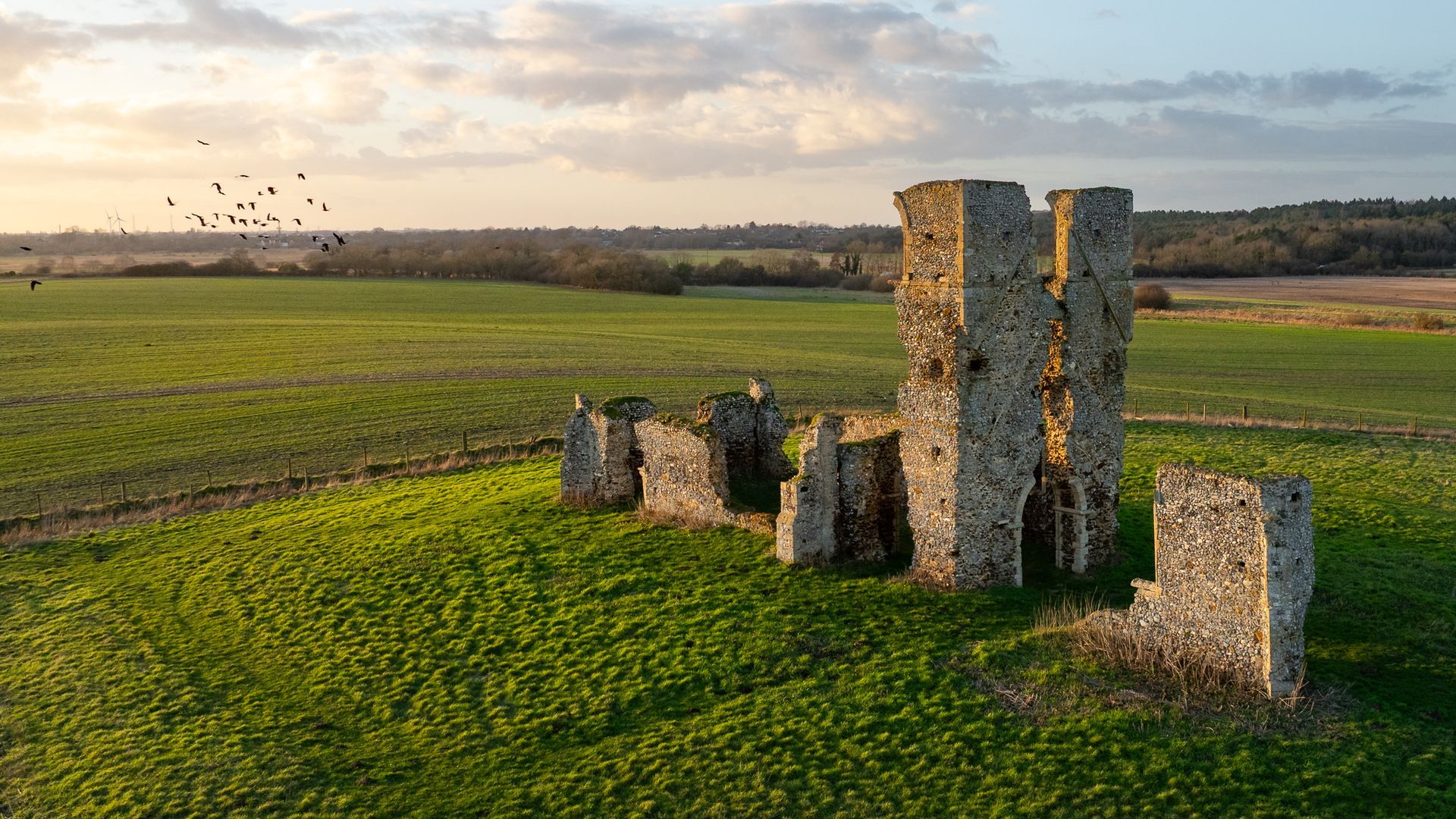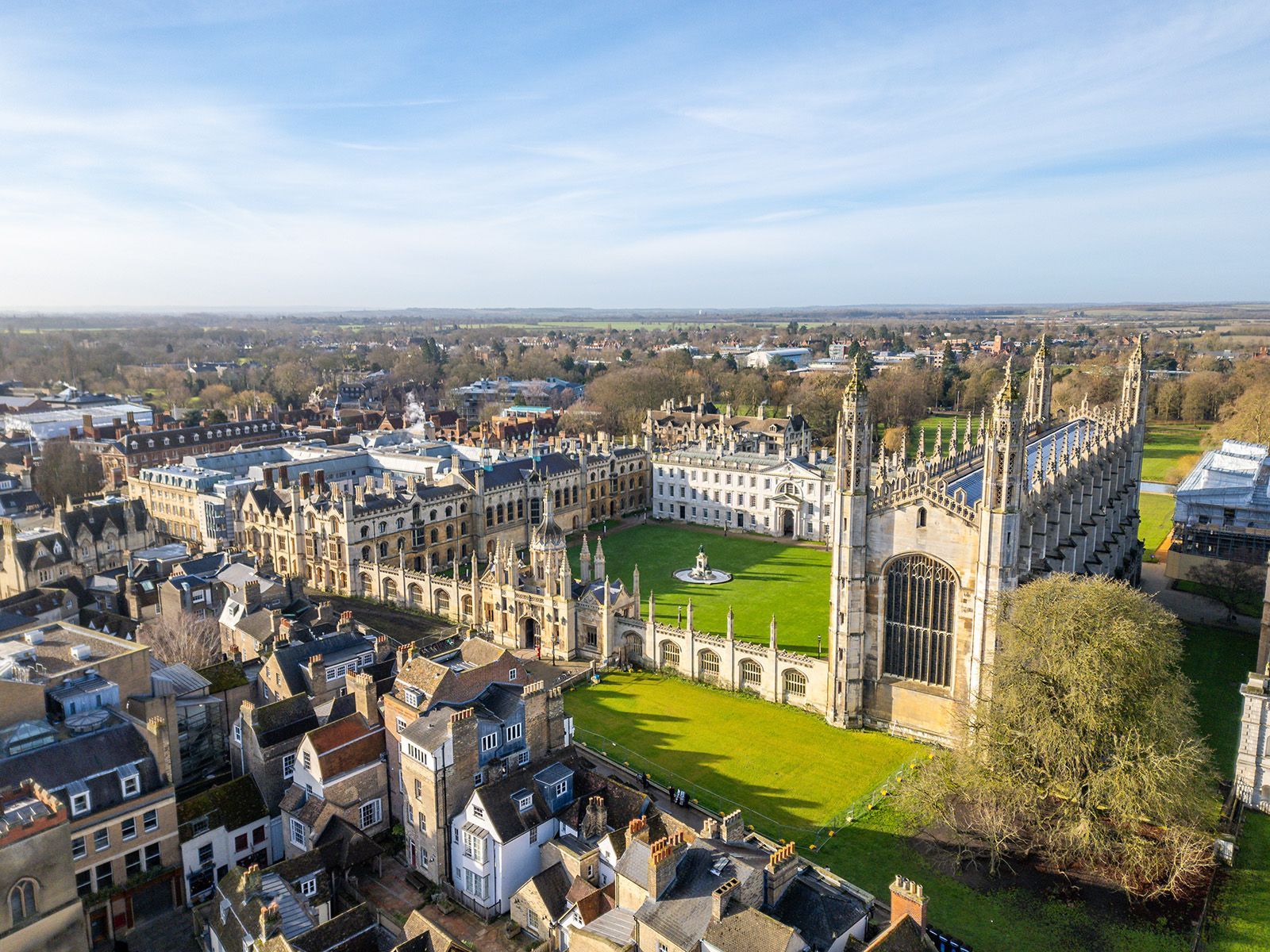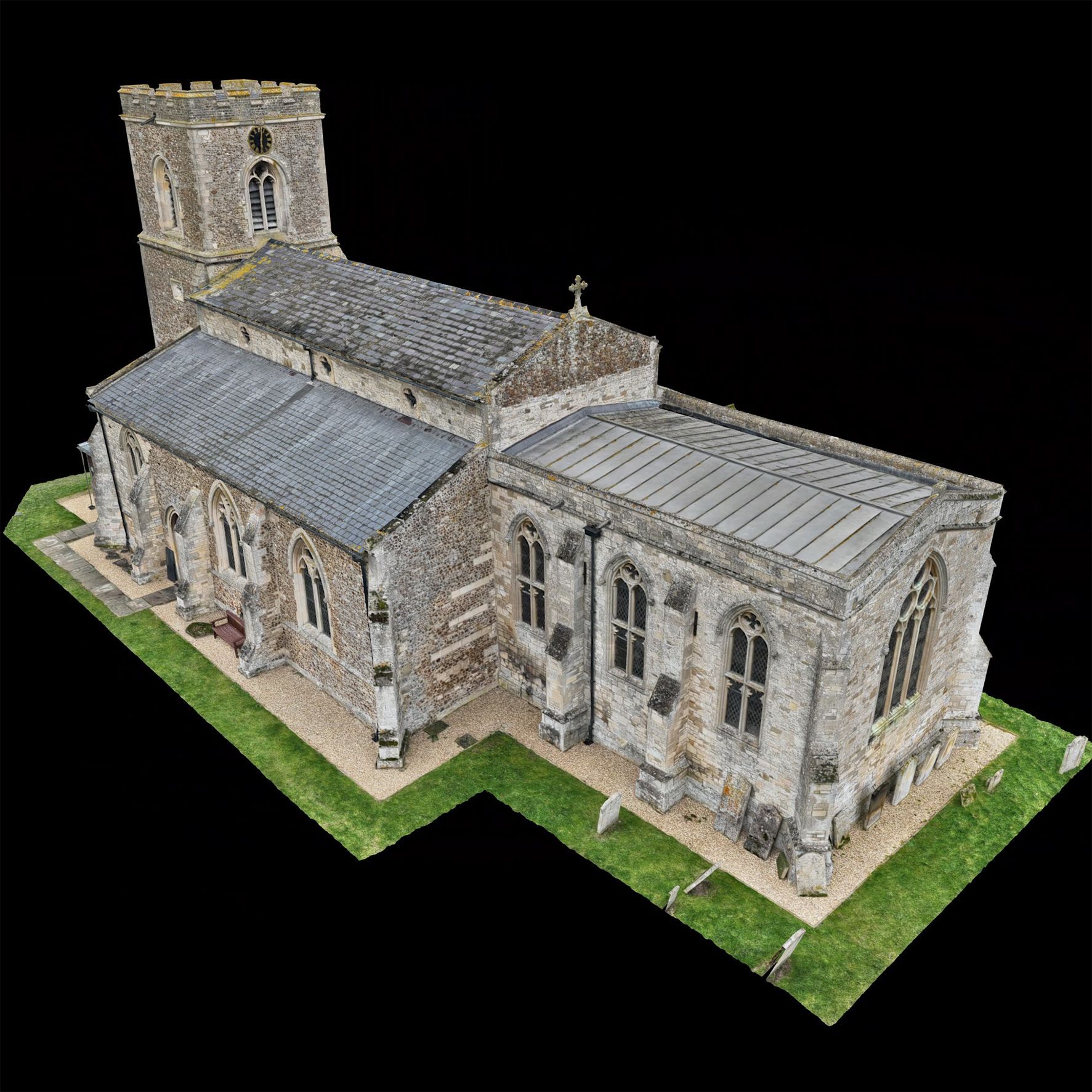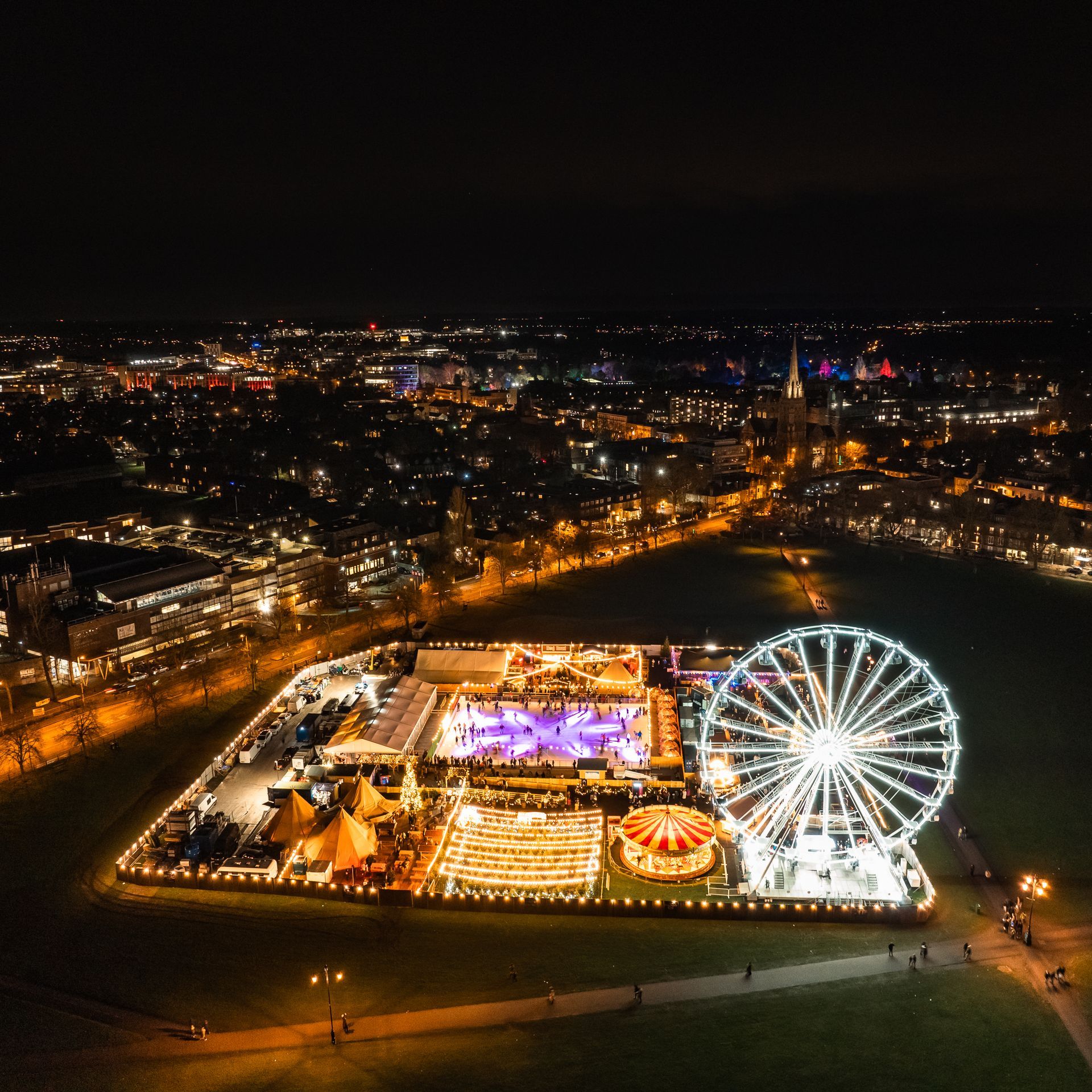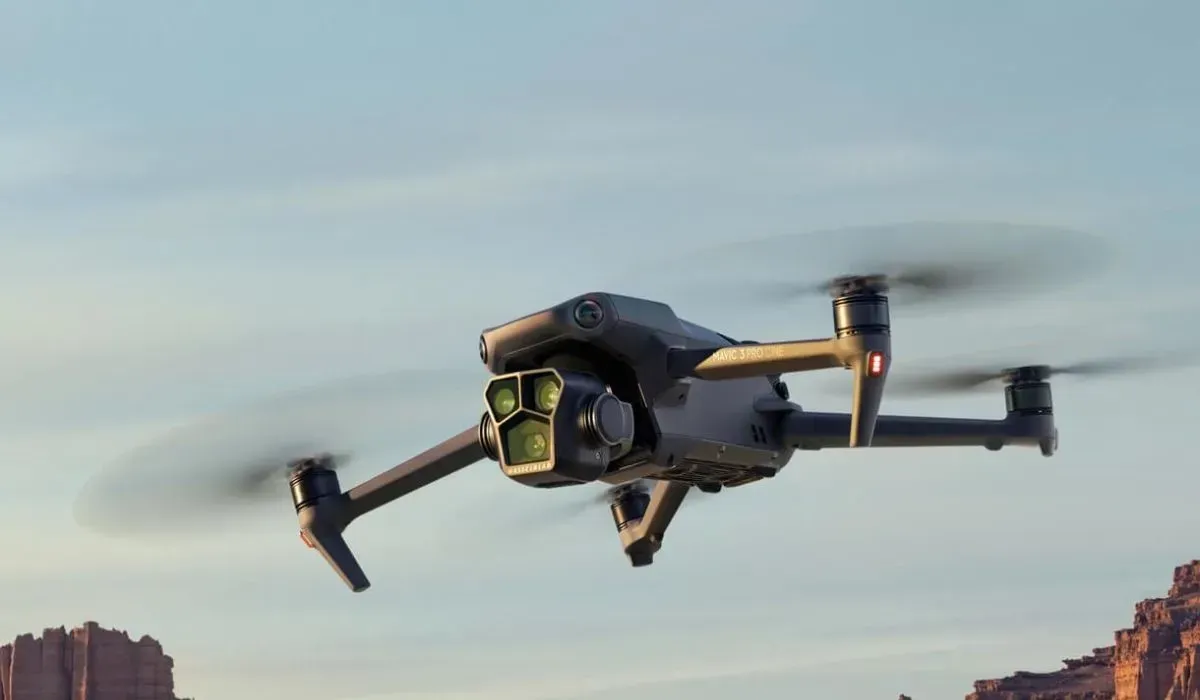Drone Survey in Reading Uncovers Rooflight Corrosion Risk
Reading Case Study: Drone Imagery Highlights Rooflight Corrosion Risk
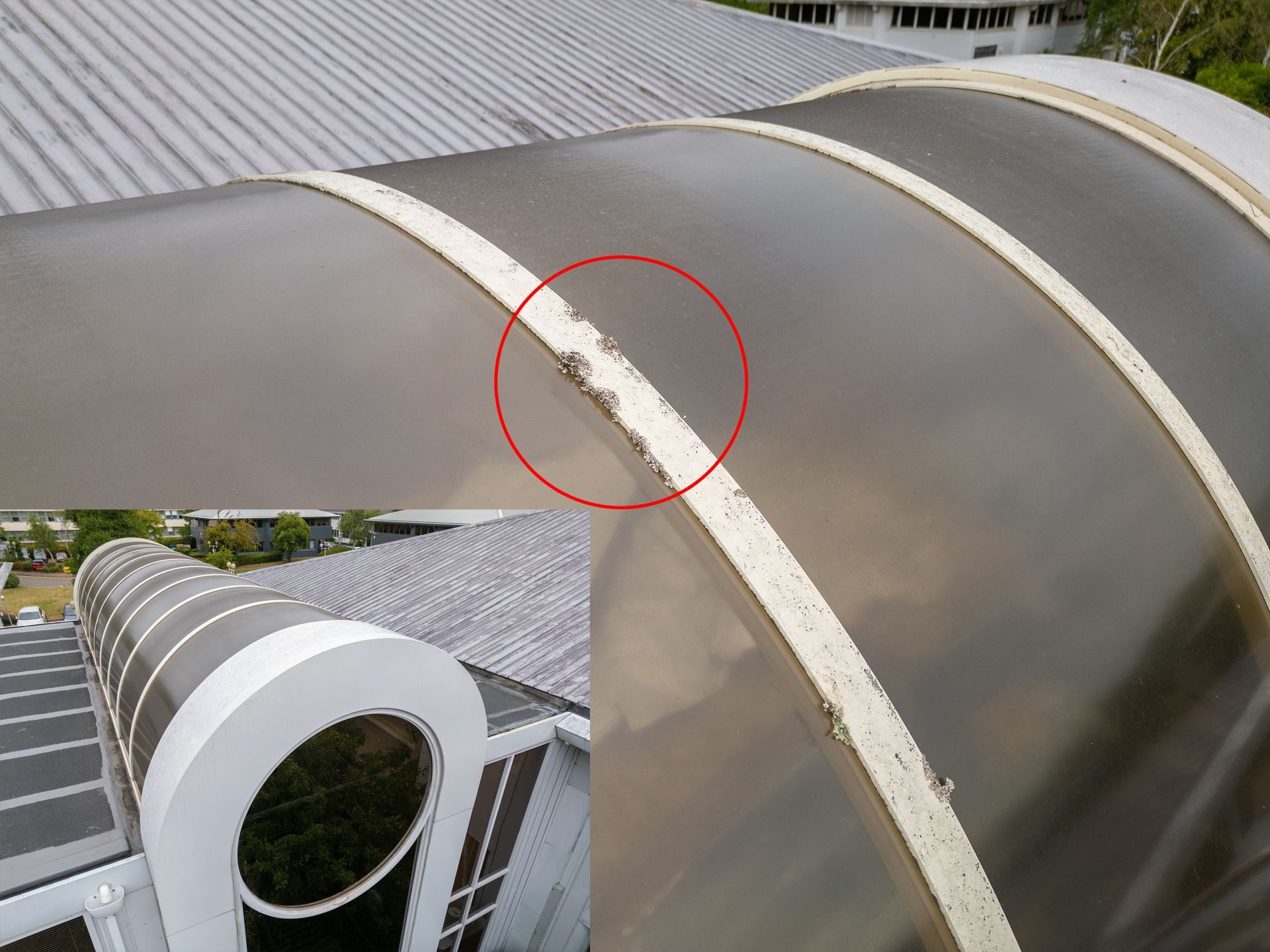
We were appointed to undertake a rapid drone survey of a commercial property in Reading as part of an end-of-tenancy condition assessment. From the air, our high-resolution imagery revealed a detail that is impossible to see from ground level and costly to verify with manual access.
A barrel-vaulted rooflight showing clear signs of coating distress on the white aluminium capping straps. In several frames the paint presents as blistered and chalky, and there is evidence of light lichen growth—classic indicators that moisture has found a way beneath the finish and that the protective system is no longer performing as intended.
Why does this matter? Those slender capping straps do more than tidy the appearance of the rooflight; they clamp the glazing sheets and help maintain weather-tightness. When moisture penetrates a damaged or poorly adhered coating on aluminium, under-film corrosion can begin to creep. Often described as filiform corrosion, it travels in thread-like paths beneath the paint, progressively lifting the coating. As the corrosion swells and spreads, it undermines the bond and can reduce the effective section of the metal beneath. Over time the strap loses clamping pressure, fixings can slacken, and what begins as a coating defect becomes a functional risk. Water can track in at laps and edges, wind uplift forces have more to work with during storms, and in the worst case a panel can be compromised outright.
From a surveying perspective, the value of seeing this clearly and contextually—strap, fixings, glazing, and adjacent roof fabric in one sharp frame—cannot be overstated. It means the team can move directly from observation to scoping, without guessing at extent or paying for exploratory access just to confirm what’s already apparent in the images.
This gave the commercial surveying client everything needed to compile a targeted schedule of works for the dilapidations report: clear evidence, credible context, and a consistent photographic record that sits comfortably in professional documentation.
For landlords and tenants navigating end-of-lease obligations, this approach pays dividends. The landlord receives a defensible, date-stamped evidence base that supports proactive maintenance and protects asset value. The tenant gains clarity on the extent of works and the likely costs, reducing grey areas in negotiations and helping to close out obligations promptly. For the surveyor and project manager, the imagery translates into faster quantification and pricing: because the defects are captured at true angles and sensible stand-off distances, it is easier to measure, specify, and communicate what needs to happen and where.
There is a safety dividend too. Traditional elevated inspections expose people to working-at-height risk and can interrupt operations below. By contrast, our pilots operate within a robust safety and compliance framework, coordinating with site management to keep flight lines clear and ensure privacy and data security are respected. The result is a full-coverage visual inspection with negligible operational impact, delivered to a standard that stands up in technical reports and stakeholder briefings alike.
This Reading project is a compact example of why drone surveying has become a first-line tool for commercial roofs. It uncovers the details that matter early enough to address them efficiently. It turns what would once have been a “scaffold and see” exercise into a precise programme of remedial work. And it does so at the pace modern projects demand: rapid mobilisation, concise on-site time, and same-day evidence packs that move decisions forward.
If you’re preparing an end-of-tenancy condition report, planning a portfolio review, or simply want confidence in the state of your rooflights without disrupting the business beneath, our team can help. We combine disciplined flight operations with surveyor-friendly outputs to give you the visibility you need and the certainty stakeholders expect.

